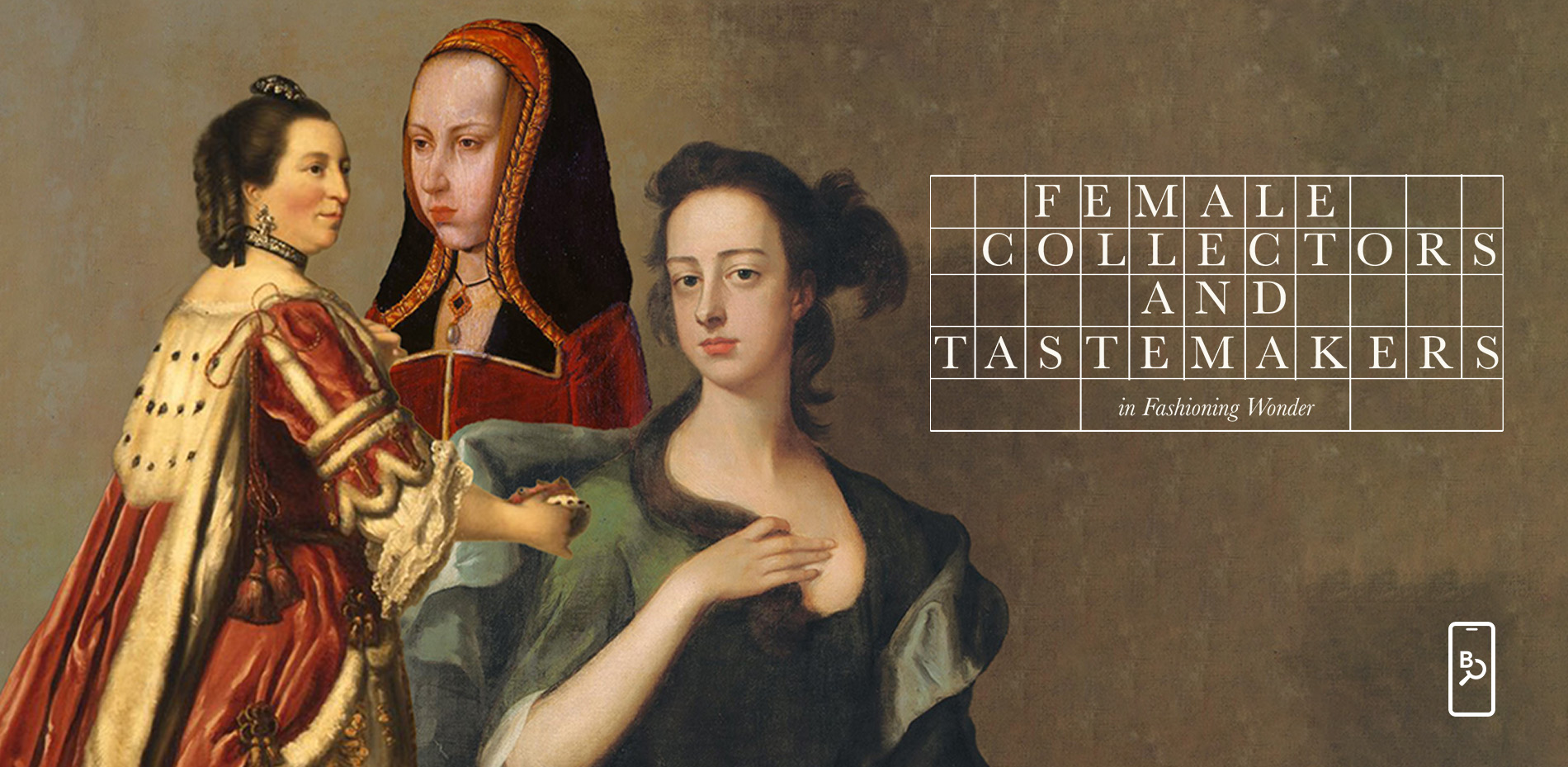Fashioning Wonder: A Cabinet of Curiosities
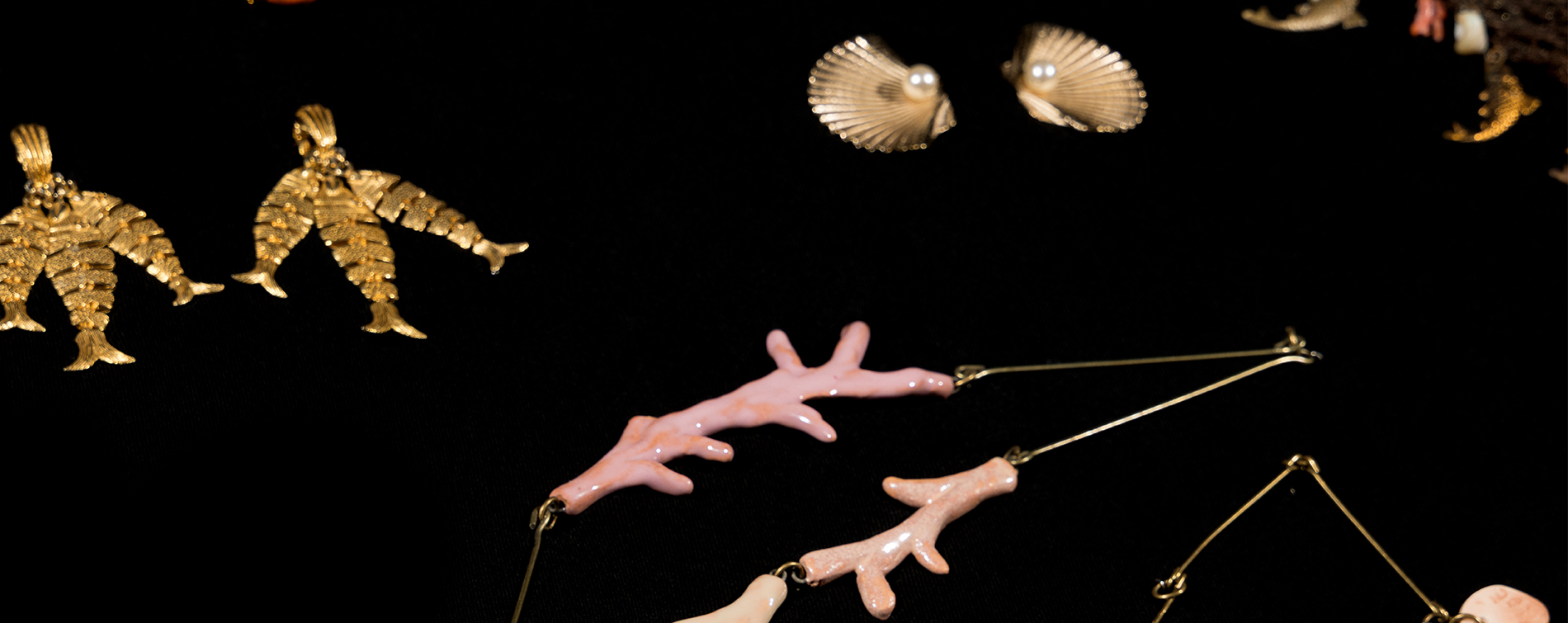 A collection of sea life-inspired jewelry, including examples from Chloe, Yves Saint
Laurent, and Christian Lacroix.
A collection of sea life-inspired jewelry, including examples from Chloe, Yves Saint
Laurent, and Christian Lacroix.
Every once in a while, one exhibition cuts through the rest—and this time, the Museum at FIT’s latest show, "Fashioning Wonder: A Cabinet of Curiosities" is most definitely holding the knife.
Share using #FashioningWonder
Fashioning Wonder: A Cabinet of Curiosities was an inventive exhibition that provided the first in-depth exploration of the fascinating connections between cabinets of curiosities and fashion. Also known as wunderkammern in German, cabinets of curiosities can be traced back to the early 16th century. They were precursors to the modern museum, and many included examples of clothing. The exhibition featured nearly 200 garments and accessories, almost exclusively selected from MFIT's permanent collection, which are inspired by the breadth of objects collected within the cabinets. The objects on view, many of which were shown for the first time, were meant to pique curiosity through their rarity, beauty, or originality.
An introductory gallery examined the history of cabinets of curiosities, explaining their significance to the Age of Exploration (15th to 17th centuries), their ties to colonialism, and the need for contemporary museums to be more inclusive and informed about the objects they acquire. It also highlighted the interconnections between curiosity, creativity, and collecting. A dress by Mary Katrantzou dates to her 10th anniversary collection in 2019, in which she expressed the urge "to amass like objects of a particular kind, to record, to study and identify, to protect and cherish." Its intricate patterning included butterflies and seashells, both of which were regularly featured in the cabinets.
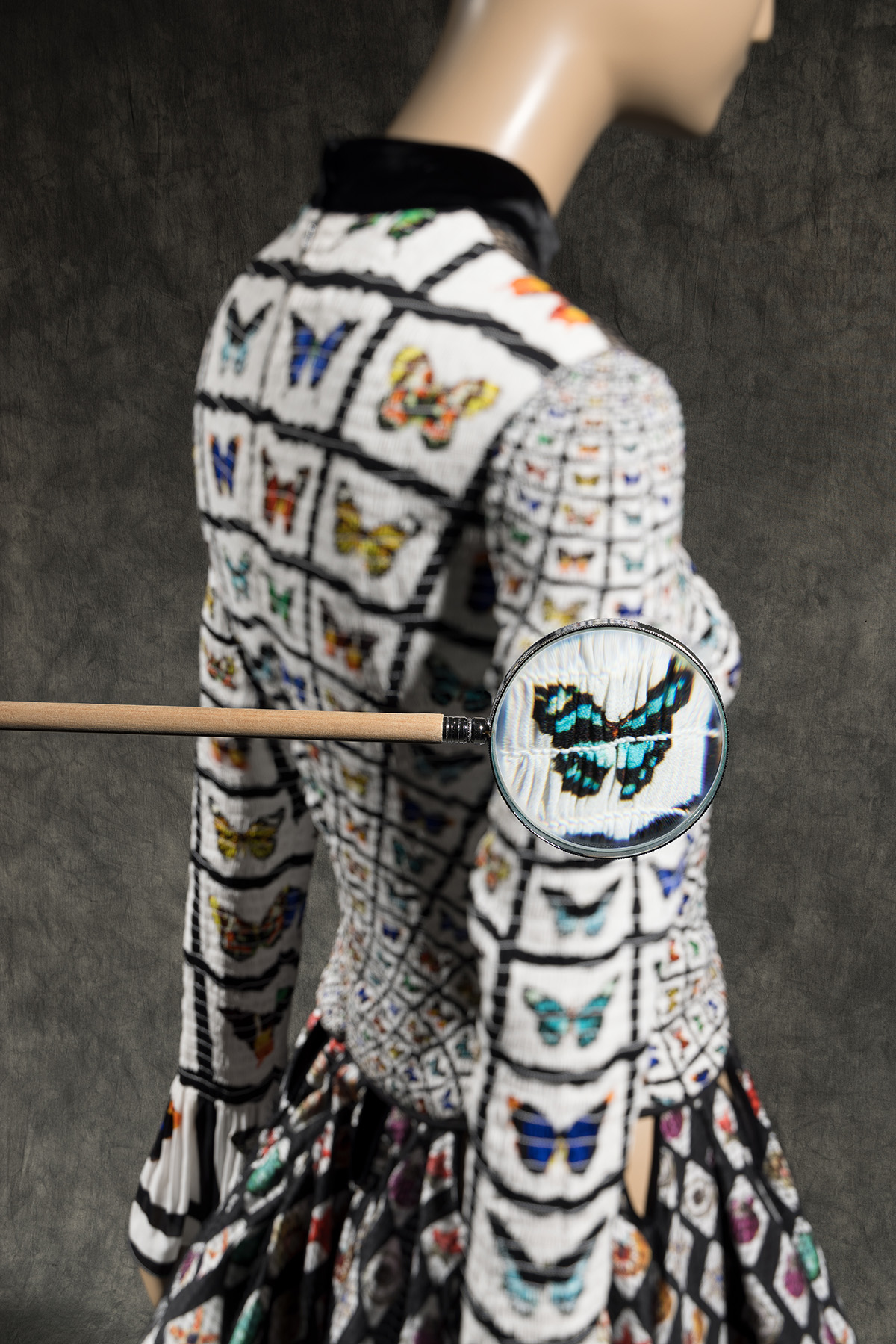
Mary Katrantzou, printed, embroidered, and beaded dress with net overlay, spring 2019, England, museum purchase, 2023.52.1
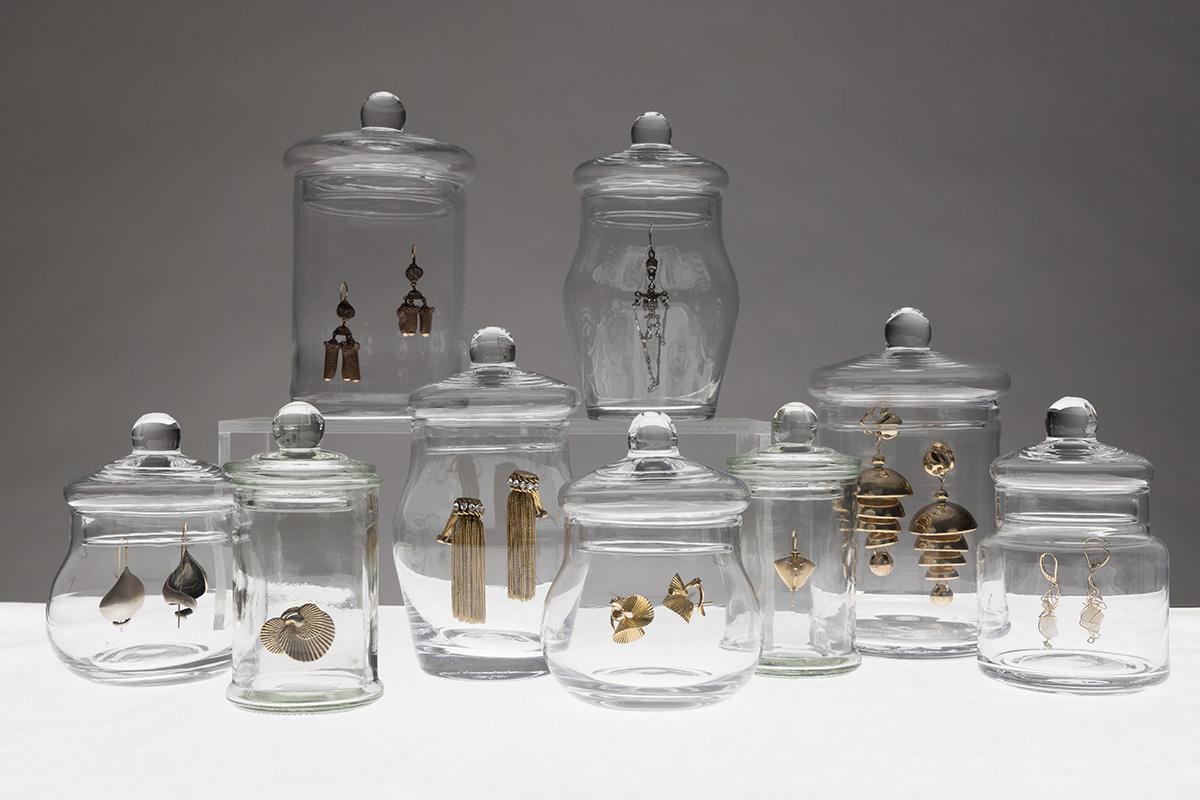
"Specimen jars" featuring earrings from labels including Kai-Yin Lo, Ted Muehling, and Tiffany's.
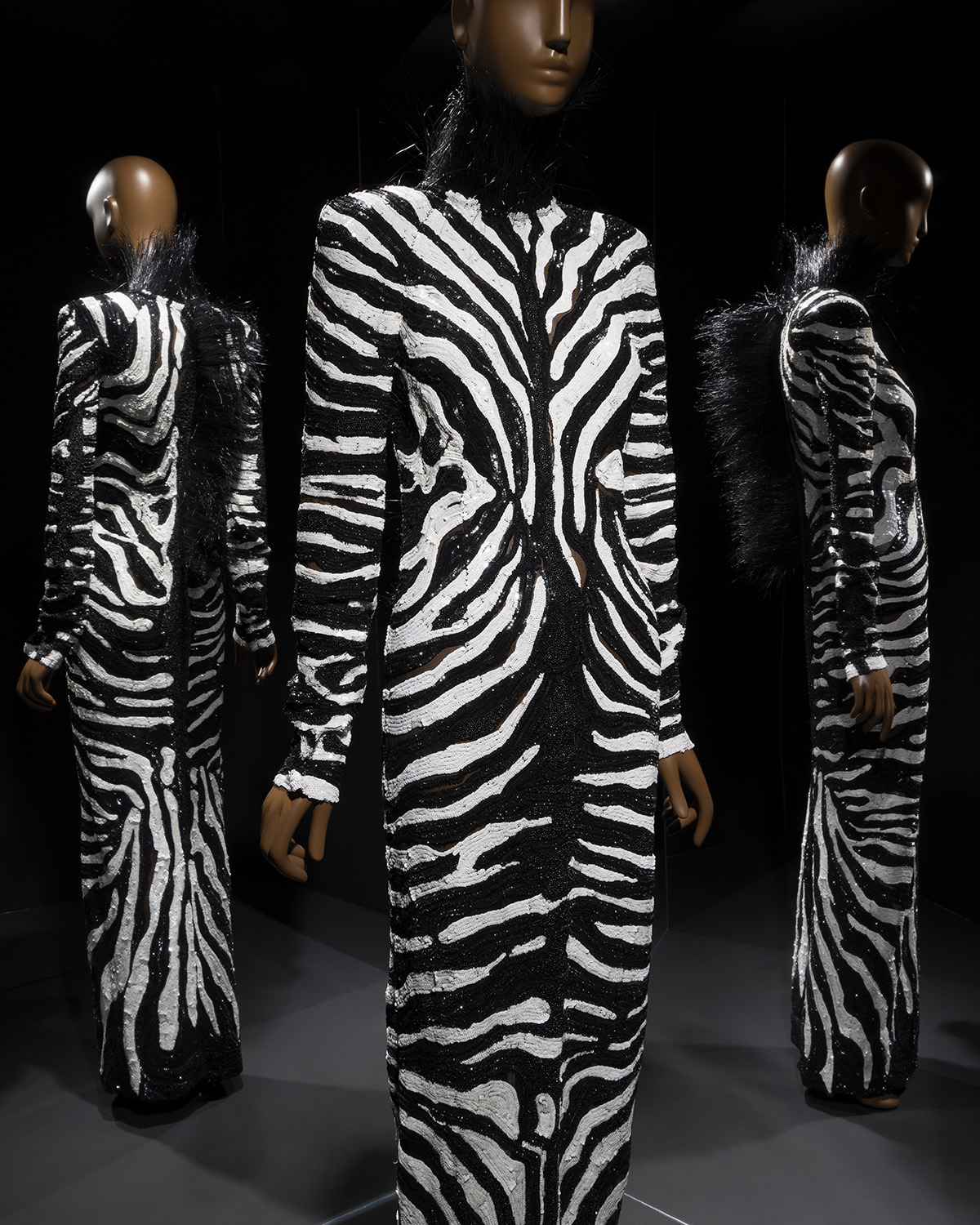
Tom Ford, sequined and beaded zebra-print dress with horsehair "mane," fall 2013, USA, gift of the Estate of Joy Venturini Bianchi, 2022.65.35
This “Anti-Blockbuster” Exhibition at the Museum at FIT Is a Marvel to Behold.
Within the main gallery, a playful exhibition design encouraged exploration of the show's 10 themes, divided into sections, through custom-made sets, each of which offers a contemporary, fashion-focused take on cabinets of curiosities. The popularity of materials of the animal, vegetable, and mineral varieties inspired a section on Specimens. It illustrated fashion's longstanding interest in the natural world, with some objects displayed in unexpected ways. On view were a variety of earrings from makers including Kai-Yin Lo, Ted Muehling, and Tiffany's, displayed in small glass jars to evoke the appearance of scientific specimens. A fall 2013 gown by Tom Ford, intricately beaded in a zebra pattern, was complete with a horsehair "mane" that ran down the center back of the floor-length garment.
An Aviary was represented by a large, central "bird cage," in which a variety of feathered objects are housed. Some cabinets featured menageries of live animals, and collections of unusual birds were especially prestigious. Feathers have been associated with luxury fashion for centuries, though ethical and environmental concerns have diminished the use of feathers in recent years. On view for the first time ever was a table that was densely and vividly adorned with feathers by milliner-turned-photographer Bill Cunningham.
Human anatomical specimens were also included in cabinets of curiosities, and they were sometimes housed in a specialized space referred to as an Anatomical Theatre. Fashion designers have been equally intrigued by the human form, simultaneously covering it and referencing it in designs that take inspiration from bones, organs, and musculature. Among the objects featured was a body-skimming 2013 dress by Arzu Kaprol, made from metallic leather with a cut-out skeletal design.
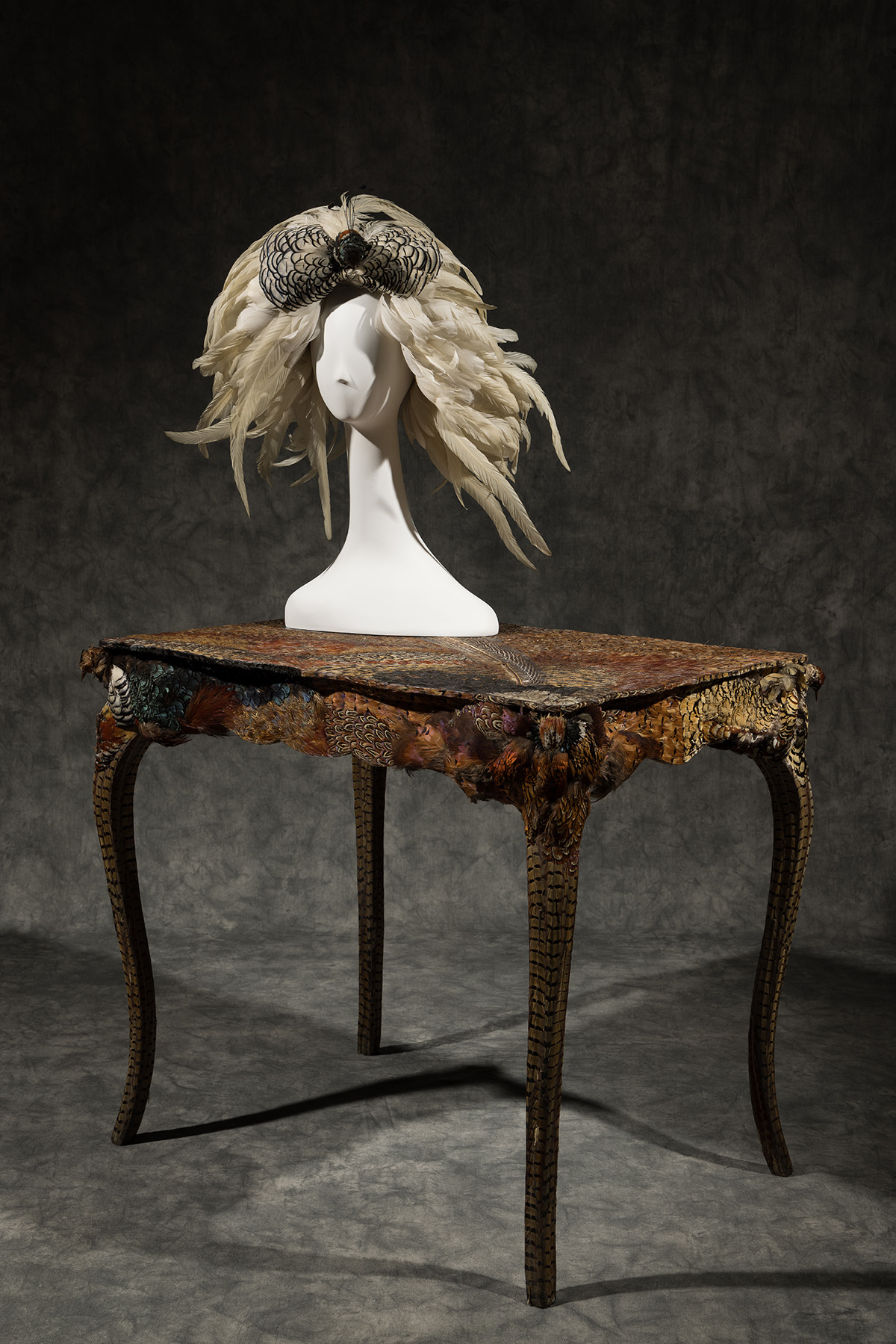
Adolfo, feathered headdress, 1962–1964, France, donated in memory of Isabel Eberstadt by her family, 2007.46.66
Bill Cunningham, feathered table, 1960s, USA, gift of Frederick Eberstadt, 2014.6.1
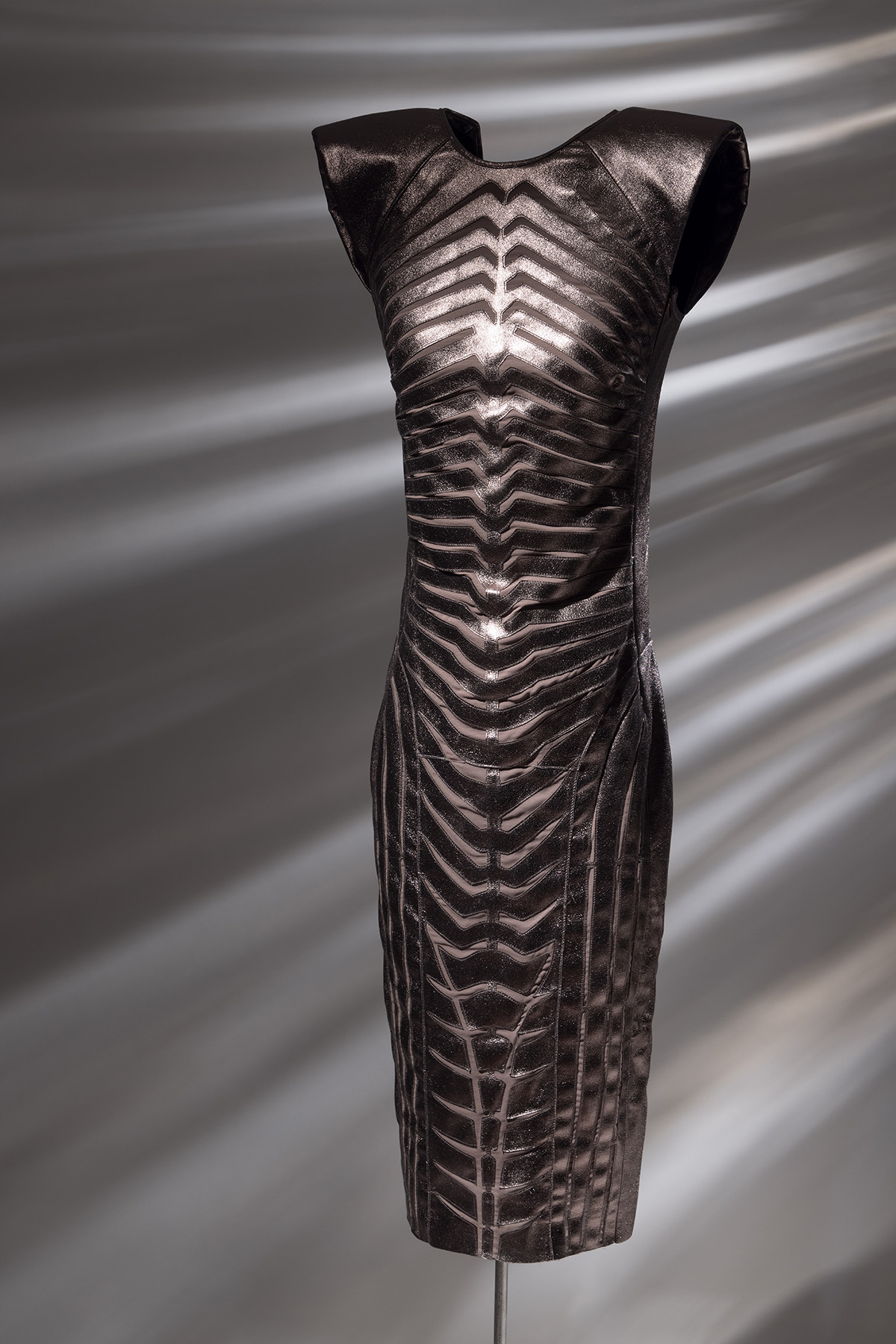
Arzu Kaprol, "skeleton" dress in rose metallic leather, spring 2013, Turkey, gift of Arzu Kaprol, 2015.31.1
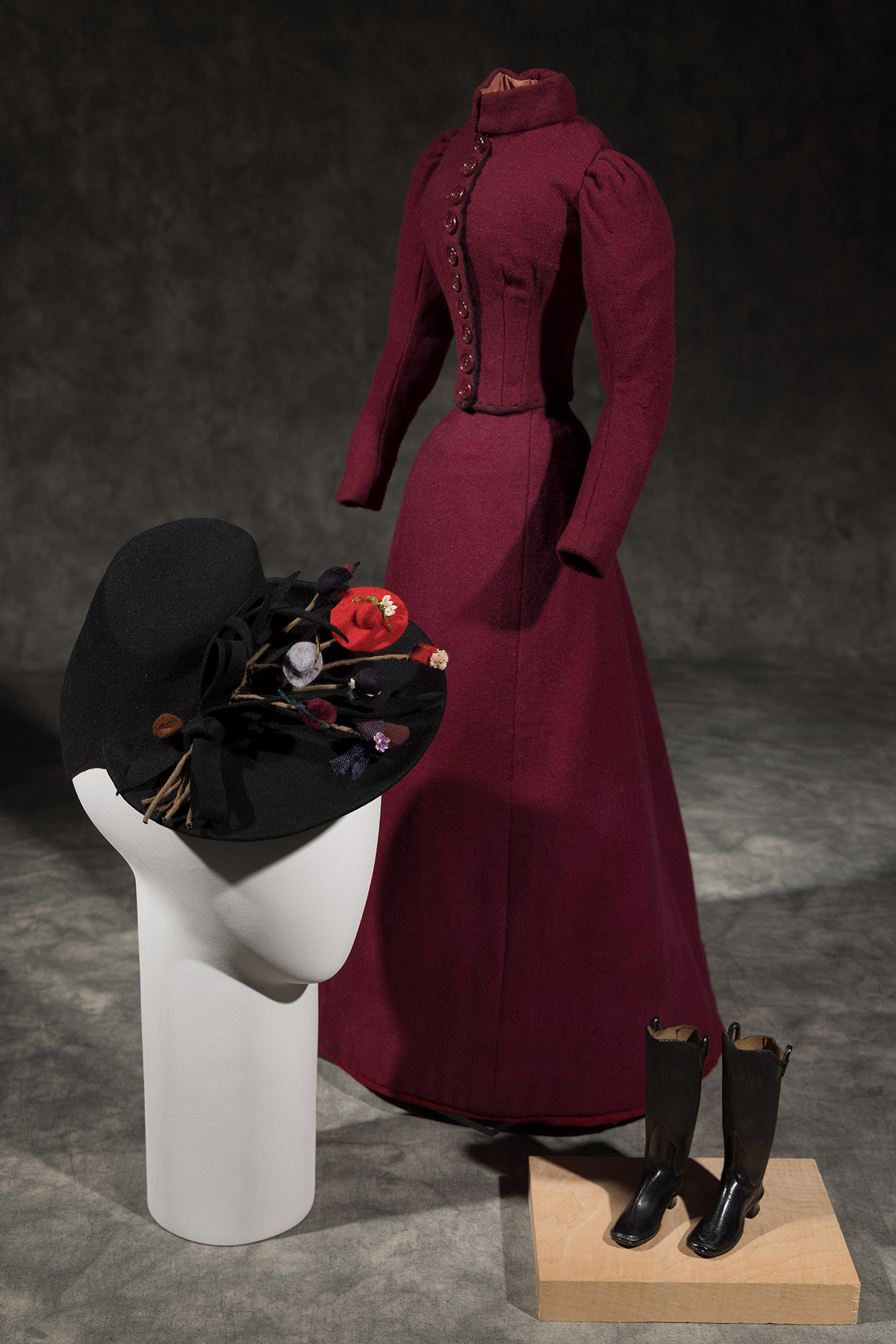
A group of miniature objects. From left: Late 1930s felt hat adorned with tiny hats by Hattie Carnegie, gift of William F. Sweeney. Red wool dress (dressmaker’s sample) c. 1890, museum purchase. Black rubber boots (salesperson’s sample) c. 1910–1915, gift of Mike Dykeman.
The Fashion Institute of Technology has one of the most wonderful free museums in New York City, and right now it also has one of the most wonderful (and wonderfully titled) exhibits: "Fashioning Wonder: A Cabinet of Curiosities.”
The techniques, tools, and materials used to create artifacts were often celebrated in the cabinets, and the exhibition's section on Artisanship reflected this idea. In addition to garments superbly crafted in a variety of techniques, this section included miniature fashion objects that can be admired for their intricate handcraft. Cabinets featured items not only made with extraordinary skill, but also the tools used to create them—frequently objects of beauty in their own right. This idea also extends to fashion, as demonstrated by items such as a late-19th-century dress form and a sculptural, mid-20th-century hat block.
The Kunstkammer ("Chamber of Art") section of the exhibition was inspired by works of fine art, especially paintings, that were commonly collected. It showcased canonical artworks that have been transformed into clothing, including a 2018 Comme des Garçons dress featuring the 1591 painting Vertumnus by Giuseppe Arcimboldo—a composite portrait of Emperor Rudolf II that became part of his substantial assemblage of curiosities.
Similarly, Vanitas paintings–17th-century artworks that featured gorups of symbolic objects presenting the transience of human life and its coneits–were often incorporated into collections of curiosities. The exhibition included its own version of a vanitas tableau, created using fashion accessories. These included a pair of Sophia Webster's elegant butterfly shoes and a skull-shaped leather bag by AMBUSH x Masaya Kushino, representing the fragility of life and mortality.
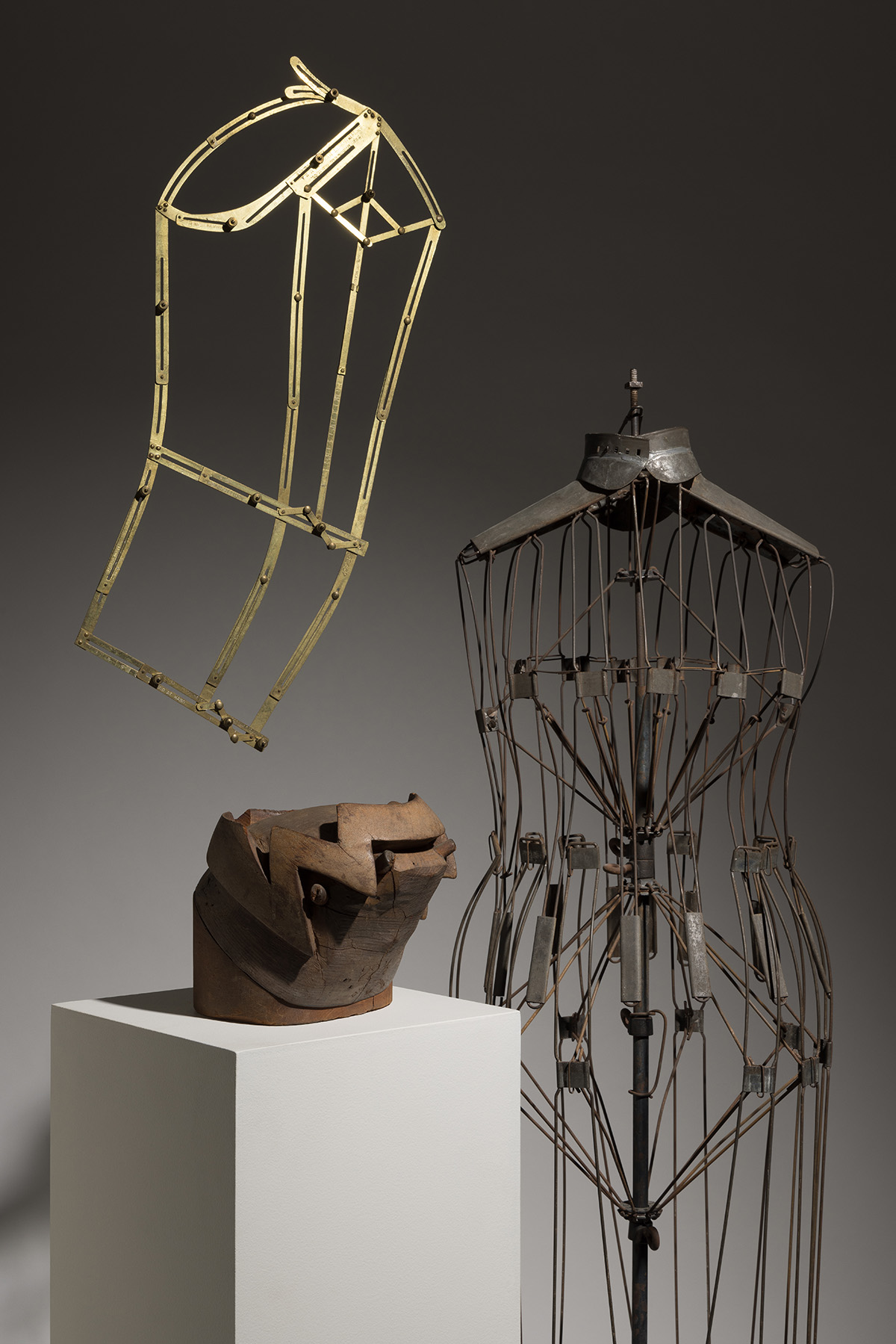
Fashion tools: Brass sleeve-drafting tool from 1893 (hanging), museum purchase. Early 1950s cedar hat block (on pedestal), gift of Rose Simon. Metal wire dress form, 1881, gift of Mrs. Herbert Singer.

Comme des Garçons, polyester, cotton, and nylon dress printed with Arcimboldo's painting of Vertumnus, spring 2018, Japan, gift of Nordstrom, 2021.33.5
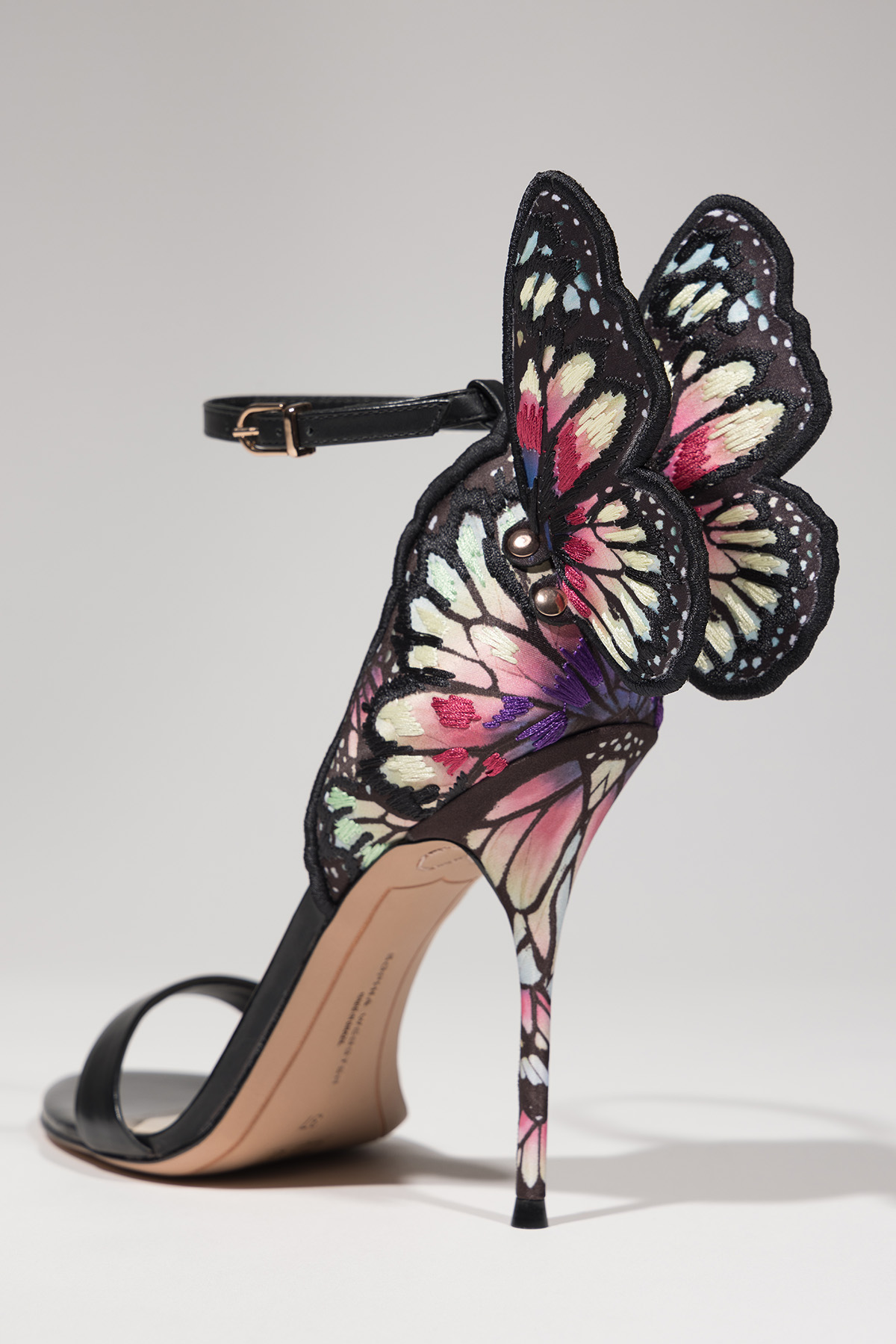
Sophia Webster, Chiara sandals with multicolor embroidery and hand-painted heels, 2019, England, gift of Sophia Webster, 2017.55.1
Optical marvels such as telescopes, camera obscuras, prisms, and mirrors formed another collecting category within the cabinets. Reflections and Refractions included objects that are embellished with reflective materials or feature optical or kaleidoscopic designs. Such eye-catching techniques—exemplified by a 1996 dress by CD Greene, designed for Tina Turner and adorned with rhinestones and small mirrors—were heightened by the use of mirrors in the exhibition design.
Objects of illusion offered humorous or clever ways to fool cabinet visitors. The art of trompe l'oeil (meaning "deceives the eye") can be traced as far back as ancient Greece. Its use in fashion, popularized over the course of the 20th century, can be achieved through print, construction, or embellishment. Illusions featured a 1955 dress by Pucci, made from the label’s impressively convincing "Visone" ("Mink") printed silk, complete with "tails" edging the skirt hem.
The final sections of the exhibition were designed for audience interaction, which was an important aspect of visitor experience within early cabinets of curiosities. What Is It? took its cue from the rare and unusual objects found in early collections. Visitors were encouraged to test their knowledge of fashion history by observing a selection of curious or obsolete fashion accessories, with the goal of guessing how they were made, used, or worn before learning about them.
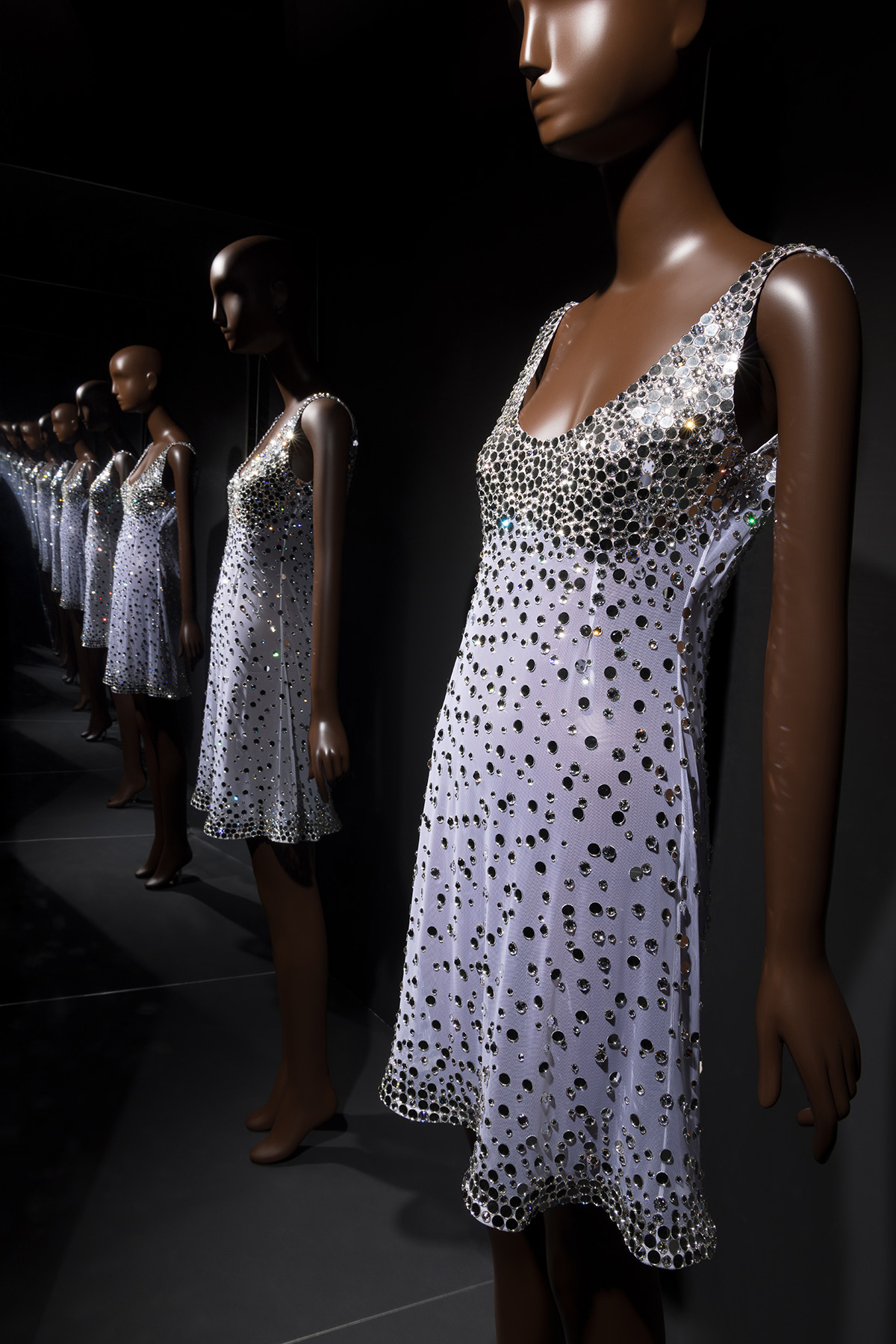
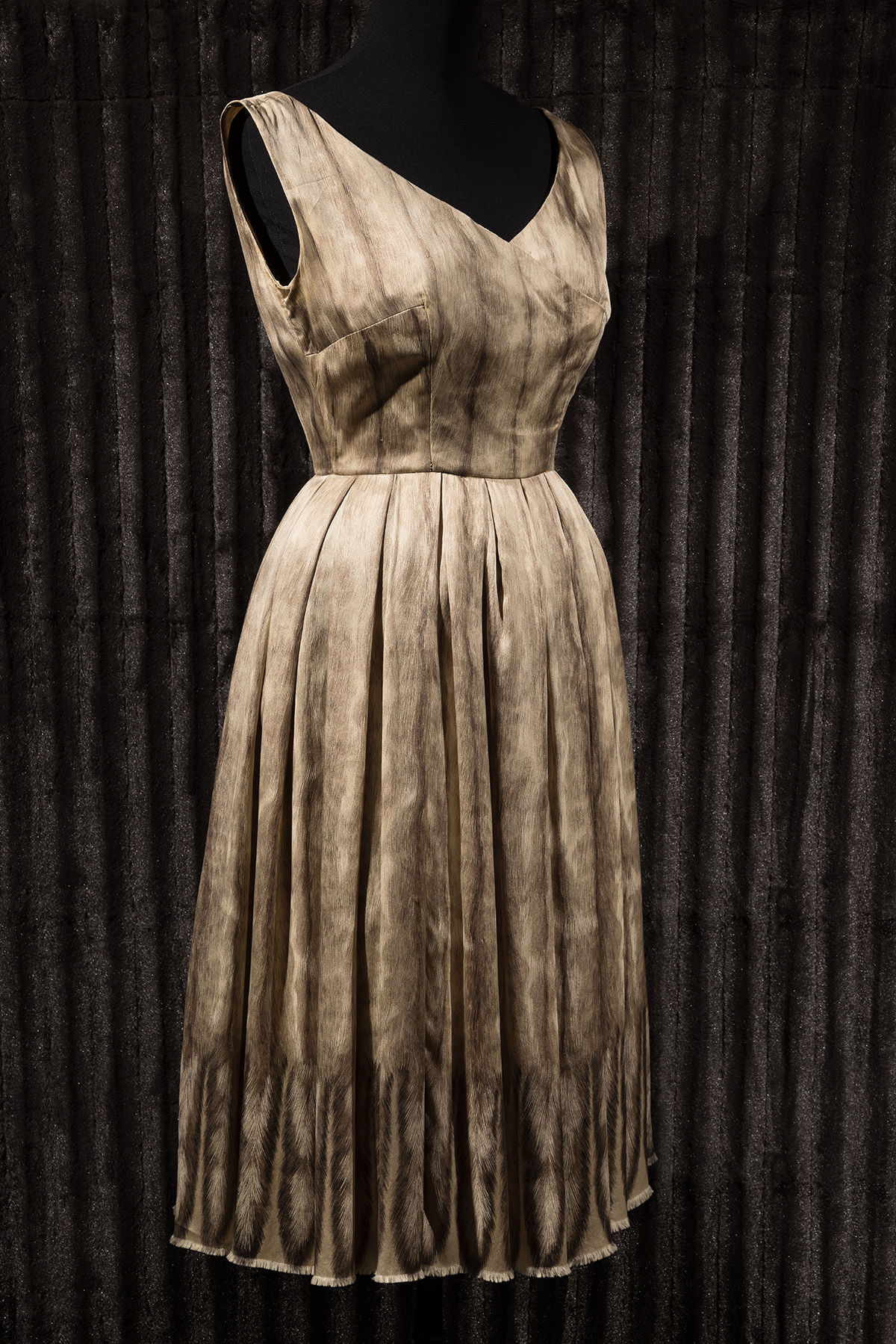
The Senses included a touchable replica of a Molyneux dress from circa 1948 (made by Katherine Shark, a graduate student in FIT's MA Fashion and Textile Studies program), shown alongside the original object. The dress was fashioned with eight functional pockets around the skirt—a nod to the small, private "collections" of objects we sometimes carry on our person. The sounds made by several objects—usually silenced in the context of a museum exhibition—were recorded for visitors to experience. This included a red silk umbrella from the late 1950s, which featured a wooden, cello-shaped handle that doubles as a music box. When wound, it plays "The Blue Danube" waltz—a detail intended to add a bit of wonder to everyday life.
Fashioning Wonder: A Cabinet of Curiosities was curated by Dr. Colleen Hill, senior curator of costume, MFIT.
EXHIBITION IMAGERY & RELATED EVENTS
In The Press
Objects of Wonder for Person Place Thing
Wondrous Objects Symposium
Female Collectors and Tastemakers in "Fashioning Wonder"
Image: From left: Margaret of Austria, attributed to Pieter van Coninxloo, circa 1500. Royal Collection Trust © His Majesty King Charles 2022. Margaret Cavendish Bentinck by Michael Dahl, circa 1730s. Private collection. Elizabeth Percy, attributed to F. Lindo (after Joshua Reynolds), circa 1760s © Collection of the Duke of Northumberland.

